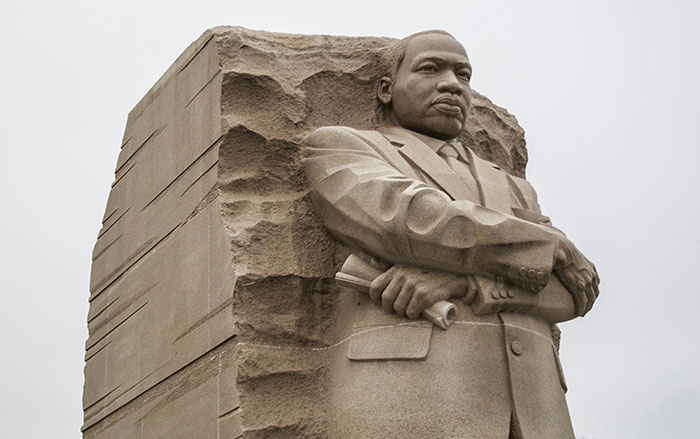Study projects huge rate increases with city-owned water system
The back-and-forth between Golden State Water Company and the city of Claremont continues today with the release of a study outlining 3 possible scenarios for the water company takeover.
According to local water consultant Rodney Smith on behalf of Golden State, a $54 million water system purchase means a water bill increase of $469 annually for Claremont residents. Mr. Smith makes this assertion among other projections regarding the city’s potential water purchase in a feasibility study released Wednesday, December 19.
While citing several reasons why he advises the city against its water system purchase, much of it comes down to one issue for Mr. Smith: operations and management.
“Running a [water] system is not playing Nintendo. You don’t get amateurs involved to do this,” he said.
Mr. Smith noted his belief that, if the water system is purchased for $54 million, rates will go up about 30 percent for decades. That percentage increases as the total purchase price goes up, he said.
“If you lose the litigation lottery, your rates are going to go over the roof and you are hoping that the city—which is going to have to expand and transform themselves into major asset managers, infrastructure planners, risk managers and all that—doesn’t screw it up.”
A copy of Mr. Smith’s report, titled “The Economics of Claremont’s Attempt to Buy the Water System,” was delivered to Claremont councilmembers and other city officials early Wednesday morning, outlining what Mr. Smith believes will be costs incurred by residents should a $54 million, $104 million or $204 million deal be made resulting in the city’s ownership of its water system. The $54 million figure is based on the city’s formal offer to the water company, the $104 million is based on the League of Women Voters estimate in a 2006 study and $204 million as an arbitrary number selected by Mr. Smith.
Mr. Smith’s study does not suggest a price for the city’s water system, but he indicates the water company is worth at least $204 million and could very well go beyond that price. He goes on to question whether Claremont city employees are well-enough prepared for such a massive undertaking.
“The auto mart used to be full. It’s frickin’ empty now. And the warehouse [sic] district took a long time,” Mr. Smith said in reference to both Auto Center Drive and the Packinghouse Village expansion project. “There’s a lot of empty spaces there. There’s going to be an issue with that track record.”
Golden State has not yet released what it believes to be the cost of its system after rejecting the city’s $54 million offer last month. A study to determine that price is currently underway, according to Denise Kruger, Golden State’s senior vice president of regulated utilities.
Mr. Smith expressed concerns about whether or not the city will able to build a successful enough bond management team to get the funds needed to purchase the water system.
“Who are they?” he said in reference to city staff. “And what about the city manager? What’s his record?”
As water company and city representatives await negotiations, which have yet to be scheduled according to Ms. Kruger, Golden State approached Mr. Smith to conduct the report brought before the city. The presented document represents an estimated month of work, according to Mr. Smith.
A Claremont resident since 1982, Mr. Smith is the senior vice president of Claremont-based Stratecon, Inc., a consulting firm that specializes in the economics, finance, law and the politics of water. He earned his bachelor’s degree in economics at UCLA before receiving his PhD in economics from the University of Chicago, and went on to teach the subject at Claremont McKenna College for 15 years.
He now works full-time for the private sector as an “advisor in the acquisition of water rights throughout the western United States and in the sale and leasing of water rights and water supplies to public and private sector water users.”
A self-proclaimed “water geek,” Mr. Smith has been providing consulting services to Golden State Water Company for the last 12 years, a fact both parties disclosed up front. Mr. Smith was hired and paid by Golden State to conduct this latest water study, though how much was spent on the study was not disclosed.
Mr. Smith’s latest study is based on Golden State’s cost numbers and takes into consideration 4 main revenue requirements of the city’s water system: capital charges (or the cost of maintaining the company’s assets), income tax, operating expenses and the water itself. Should the city take over, Mr. Smith reports that, while the city would not have to worry about income tax, reported as costing Golden State an estimated $1.3 million annually, capital charges would increase significantly. Golden State currently pays about $2.97 million in capital charges. With the city’s $54 million offer, Mr. Smith estimates the city would pay $8.87 million in annual capital charges, at $104 million an estimated $15.79 million, and at $204 million about $29.51 million.
According to Mr. Smith, the dramatic increase in capital charges is partially due to the city’s lack of “pay as you go” funds for operations and capital improvements, allowing the city to bankroll needed improvements with current funds rather than borrowed money. The city would need to build up such a fund, should it take ownership of its water system, says Mr. Smith.
“While a government-owned water system does not have shareholders, it does not follow that the acquisition and operation of the system can be financed by simply borrowing the amount needed to purchase and operate the system,” he writes. “Rather, extra borrowing is needed to create an equity cushion.”
Mr. Smith believes Claremont would need to consider a financial plan not unlike local providers like the Metropolitan Water District of Southern California. MWD’s financial plan includes reserve funding that would equate to 173 days of operation and “pay as you go” financing, paying for 25 percent of its capital investments with reserves gathered from customers’ rates in previous years.
“The city of Claremont, of course, starts with a blank slate,” Mr. Smith states. “From a consumer’s perspective, the vision of lower water rates is a mirage.”
Two subjects that did not factor into Mr. Smith’s assessment are current Claremont water rates and conservation efforts. Water usage by Claremont homeowners and businesses has gone from about 14,000 acre-feet in 2007 falling to below 11,000 acre-feet since 2010. The reduction in water use has had little to no impact on residents’ water bills. In fact, the opposite outcome has occurred and many residents are paying twice as much for water as they did in 2007.
Golden State and its representatives invited COURIER representatives and Wes Woods from the Inland Valley Daily Bulletin to attend a meeting in what they say is an effort to be open and honest about the costs associated with the city’s takeover of the water company.
At the 90-minute meeting held at Stratecon in Claremont on Tuesday, Mr. Smith, Ms. Kruger from Golden State and Peter DeMarco, director of Randle Communications for Golden State, dodged the question of why Claremont residents pay such high rates and why the water company has systematically requested increases. Ms. Kruger cited infrastructure upgrades and Mr. DeMarco claims the questions have already been answered.
Claremont residents have said in the past they are willing to pay higher prices now in order to ensure that Golden State’s record of yearly rate increases does not push future generations out of Claremont.
“We’re here to support the future,” said Claremont resident Ellen Taylor to the CPUC’s administrative law judge last December. “We probably won’t see much of the benefit, but I want the benefit for my children and for my grandchildren, and I want people to think forward rather than backwards.”
On Wednesday morning, Claremont City Manager Tony Ramos told the COURIER that he had not had an opportunity to give ample review of Mr. Smith’s study.
“Once we review the information, myself and our legal team—if and when appropriate—we will have a comment,” said Mr. Ramos, adding that he feels “it is very unfortunate they chose to hold this press conference without any input or showing the city first.”
Of what he has seen, Mr. Ramos says he believes there are “numerous, gaping holes” in the information they have provided, which is consistent with the message they are giving this community to try to mislead them.
“What they haven’t touched in what I saw in the newspaper were any comments about profits or anything else like that,” Mr. Ramos said. “I think they have sent a paid message—they hired a paid professional to send the message they want to send.”
The city’s battle toward acquisition is approaching the 12-month mark, beginning with the city’s appropriation of up to $300,000 of general reserve funds to explore the the city’s purchase of the water system. The feud began in response to Golden State’s request for a 24 percent rate increase in 2013 as well as additional, smaller increases in 2014 and 2015. While the new rates were expected to begin this January, that increase has been delayed as the California Public Utilities Commission continues to deliberate.
—Beth Hartnett
news@claremont-courier.com
[Editor’s note: In our continuing effort to support open dialogue, Mr. Smith’s entire 18-page report is available on the COURIER website at www.claremont-courier.com. We have loaded it as an edition, with a link on the left side of our homepage, and can be found in the “Print Archive” tab on our home page. —KD]








0 Comments